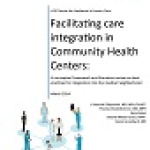Witnessing Coordinated Care in Action

More chest pains. Dizziness. Was I having a heart attack? After weeks of recurring chest pains, I finally broke down and asked my wife to take me to the hospital. So there I was, waiting in the emergency room, worried sick.
That day, the Emergency Department was full of people, both sick and injured, talking and shouting in nearby rooms. And while the scene at this particular East Bay hospital was as hectic and unenjoyable as expected, I also noticed something new: as the nurses asked about my symptoms, they were simultaneously looking up my information through their electronic medical records system. Because my doctor belongs to a medical group affiliated with the hospital, my health records were right there – available on-line to staff and doctors throughout the hospital. Not only did this help make my diagnosis more accurate, it also meant they didn’t have to ask as many background questions or run unnecessary tests. And instead of recounting my medical history to each nurse, doctor, and hospital staff person I encountered, everyone involved – including me – was able to focus on addressing the problem at hand.
Thankfully, they were able to confirm that I was not having a heart attack, and I went home with a prescription to take care of my symptoms. During my time in the E.R. that day, and in follow-up visits thereafter, I was grateful that my doctor and hospital staff could easily communicate electronically, and in real-time, about my medical history, current condition, and ongoing progress. This experience made me reflect on how wonderful it was to see, first-hand, the benefit of innovations in healthcare. Unfortunately, if you’re a low-income Californian who is uninsured or on Medi-Cal, it’s likely that your doctor or community health center doesn’t have this same ability. Within the safety net, it’s not always easy to communicate across care teams or with the local hospital, and it can still be a cumbersome process to share medical records and history. This not only leaves patients at a disadvantage, it leads to tests being duplicated, care being delayed, and critical information being lost in translation throughout the system.
Personally and professionally, I understand the importance of building these electronic bridges of care in underserved communities. I’m especially proud of the Foundation’s recent efforts to address this in places like San Joaquin, Mendocino, and Monterey Counties. In these communities, Foundation grantmaking is enabling public and safety net hospitals to build new links to community health centers that enhance collaboration and communication across and within organizations, and ultimately improve care for low-income and underserved patients. Today, I’m healthy as ever. I hope through these and other grants, all Californians will have greater potential to be safe and healthy too.


